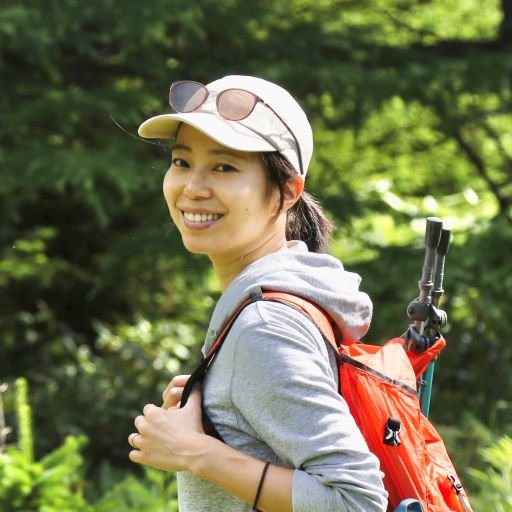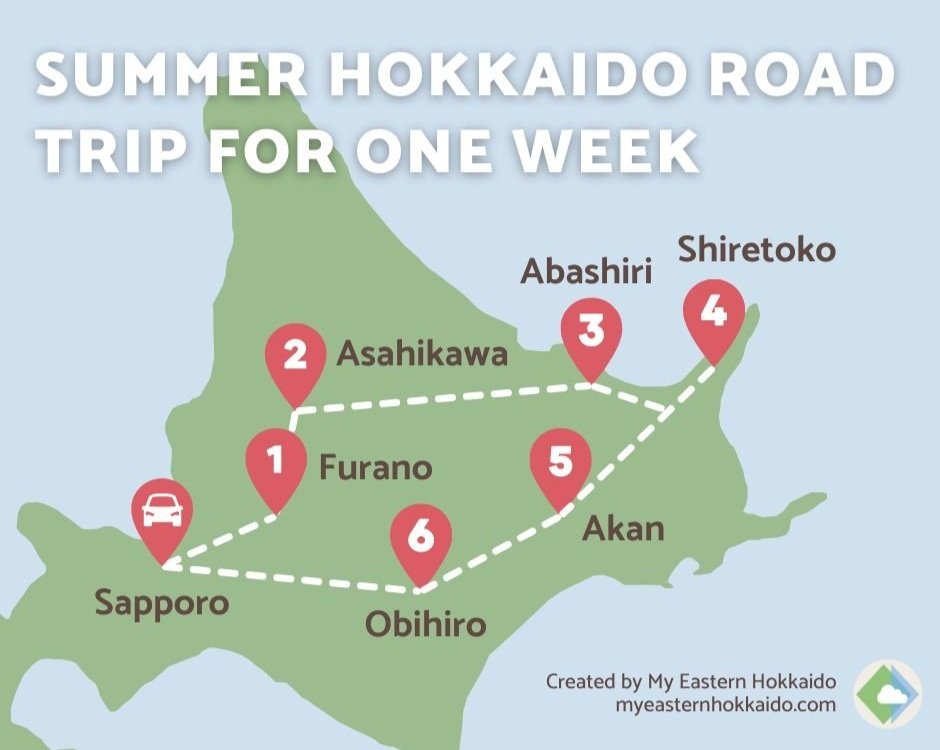Hokkaido is home to some of the best hot springs in Japan, from bustling resort towns to secluded mountain hideaways.
This is the ultimate Hokkaido Onsen Guide, with the 10 best destinations and a handy onsen map in which you can find all the onsen places featured in this article.
Grab a towel and let's dip in!
This post contains affiliate links that at no additional cost to you, I may earn a small commission to enjoy a cup of coffee on my trip☕
Useful Resources
✨Planning a trip? Grab my Ultimate Travel Planner & Itineraries
✨Traveling without a car? Check out my Public Transportation Guide
✨Stuck in your trip planning? Ask for my Local Expert Advice
History and Culture of Hot Springs in Hokkaido
The history and culture of hot springs in Hokkaido can be traced back to the island's indigenous Ainu people. The Ainu believed that hot springs, or "onsen" in Japanese, were sacred places with healing properties.
Today, the onsen culture became an important part of everyday life as well as tourism in Hokkaido. Many people visit hot springs in Hokkaido for their health benefits and relaxation.
The onsen culture can be experienced in various ways, such as visiting traditional onsen towns, staying at a ryokan (a traditional Japanese inn), and trying the local cuisine. Whether you're a first-time visitor or a seasoned onsen enthusiast, a trip to Hokkaido is not complete without experiencing the island's rich onsen culture.
Benefits of Hot Springs
Hot springs, or onsen, have been enjoyed for their health benefits for centuries. The minerals found in onsen water are believed to have therapeutic effects on the body, such as improving circulation, reducing stress, and easing muscle and joint pain.
Soaking in hot spring water can also have psychological benefits, such as reducing anxiety and promoting relaxation. The warm water and natural surroundings of a hot spring can create a peaceful and calming environment that allows the mind and body to rest and recharge.
For us as locals, hot springs are also a great way to connect with others. We often go to hot springs with family and friends, whether it’s for an evening hangout or a weekend trip, and enjoy relaxing times together.
5 Etiquette Tips for Bathing in a Hot Spring in Japan
Taking a hot spring, or onsen, in Hokkaido is a unique and enjoyable experience, but there are certain etiquette guidelines that you should follow to ensure a respectful and pleasant visit for yourself and others.
But don’t be overwhelmed, there’s nothing difficult!
Wash and rinse yourself thoroughly before getting into a bathtub.
Go naked. Wearing a swimsuit is not allowed.
Don’t bring a towel into a bathtub - just leave it on the edge of the bathtub.
No swimming, no food, no drinks.
Respect others’ privacy.
That’s it. Easy, right?
Onsen Glossary - 5 Basic Words You Should Know
1. Onsen
What we call “onsen” in Japan is a natural hot spring with water that is heated by geothermal activity. In Hokkaido, onsen water in different places contains different kinds of minerals, such as sodium and calcium, creating unique characteristics and benefits for each onsen.
2. Rotenburo
"Rotenburo" is an outdoor onsen where you can soak in the natural surroundings. Rotenburo is often found in beautiful natural locations, such as forests, mountains, or near the ocean, and provides a unique and relaxing experience. Many onsen facilities in Hokkaido have rotenburo attached to their indoor onsen area.
3. Ryokan
“Ryokan” is a Japanese traditional inn, which often serves dinner and breakfast, and has hot springs on site. Staying at a ryokan is the best way to enjoy onsen without a hustle. Nowadays, a number of onsen resort hotels with western-style buildings offer the same experience as ryokan. You will find many of them, especially in Hokkaido.
4. Higaeri
“Higaeri” (日帰り), literally meaning “returning in a day” in Japanese, is drop-in bathing in onsen without having to stay at a ryokan or onsen resorts. Some ryokan and hotels welcome drop-in customers during day time to enjoy their hot springs. There are also stand-alone onsen facilities that are only for drop-in. They usually located in residential areas for local people.
Higaeri is a great option for travelers on a budget or those who want to experience onsen without committing to a full onsen stay. Higaeri prices range from about 600 yen to 2,000 yen.
5. Kashikiri
Kashikiri, meaning reserving the whole place in Japanese, is a form of service to offer a private hot spring upon request. Many ryokan and onsen hotels have Kashikiri onsen rooms, separately from their public baths. This is a perfect option for families, couples, or people with tattoos, who are often not allowed to bathe in public baths.
Are Tattoos Allowed in Onsen?
Unfortunately, no in many places.
In Japan, tattoos are often associated with organized crime, and as a result, many public hot springs and baths have a policy of not allowing individuals with tattoos to use their facilities. While this policy may seem discriminatory to some travelers with tattoos, it is a cultural norm in Japan and is meant to ensure the safety and comfort of all guests.
That being said, I personally disagree with this old, traditional policy. It is important to respect and understand local customs and practices when traveling to any destination, however, Japan’s no-tattoo-policy has been limiting so many international visitors from enjoying our great onsen culture. And, come on, we are in 2022 now.
I myself had to make a number of phone calls to onsen hotels if my non-Japanese husband with tattoos can come and enjoy their hot springs, when he visited my hometown for the first time. It was a painful experience to be turned down so many times.
If you have tattoos and are planning to go to public hot springs, you may want to contact them and check their policy first. Some places might advise you to cover up your tattoos. The safest way is to use Kashikiri, private hot spring facility.
10 Best Onsen Destinations in Hokkaido
Hokkaido is home to many popular hot spring destinations that offer a wide range of experiences. Here are 10 popular hot spring destinations in Hokkaido that you should visit!
1. Noboribetsu
Located in the south of Sapporo, Noboribetsu onsen town is one of the most famous and well-known in Hokkaido. It features 9 different kinds of hot spring waters coming from the ground, earning an honorable title of “a department store of hot springs”. 6 out of all 14 onsen hotels offer Higaeri drop-in bathing. A popular local attraction is the Jigokudani Hell Valley, where you can see steam and hot spring water erupting from the ground.
How to get there
15 min by bus or taxi from JR Noboribetsu station. 1.5 hours by bus from JR
Sapporo station
1.5 hours by bus from New Chitose Airport
Recommended stays
2. Jozankei
Located near Sapporo, Jozankei Onsen is famous for its mild, salty hot spring water keeps you warm with sodium preventing the sweat on your skin from evaporating.
Jozankei sits inside a national park and offers beautiful landscapes in the area, such as waterfalls and rivers.
How to get there
One hour by bus from JR Sapporo station
1.5 hours by bus from New Chitose Airport
Recommended Stays
3. Yunokawa
Located in Hakodate city in Southern Hokkaido, Yunokawa Onsen is a beautiful onsen town with a long history dating back to the 15th century. The water is scent-free, clear, and silky, containing natrium and calcium that keeps you warm for a long time.
A fun place to visit nearby is Hakodate Tropical Botanical Garden, where you can see monkeys bathing in a hot spring, from December to early May.
How to get there
5 min by taxi from Hakodate Airport
45 min by bus from JR Shin Hakodate Hokuto station
Recommended Stays
4. Lake Toya
Lake Toya Onsen is located in the Shikotsu Toya National Park in the southwestern part of Hokkaido. The onsen town is a famous report of Hokkaido which hosted the G8 Summit in 2008. Many hotels offer Higaeri drop-in bathing with beautiful lake views.
You can also enjoy fun activities like cruising and canoeing on the lake, horse riding, and fruit picking.
How to get there
20 min by bus or taxi from JR Toya station
2.5 hours by bus from Sapporo
Recommended Stays
5. Sounkyo
Sounkyo Onsen town is situated in the beautiful Taisetsuzan National Park and offers stunning views of the surrounding mountains. Sounkyo has over 60 spring sources producing waters in different colors and with different scents.
The town is surrounded by beautiful rocky cliffs at the bottom of the Taisetsu Mountains. Take a ropeway to Mount Asahidake, the highest mountain in Hokkaido!
How to get there
30 min by bus or taxi from JR Kamikawa station
Two hours by bus from Asahikawa
The nearest airport is Asahikawa Airport.
Recommended Stays
6. Akan
Located right next to Lake Akan in Eastern Hokkaido, Akan onsen town is perfect for a cozy, relaxing stay. Akan’s clear spring water is gentle on the skin, and suitable for everyone from babies to the elderly. Many outdoor activities are available to explore the Akan Mashu National Park.
In Ainu Kotan, a Hokkaido indigenous people’s community, you can learn Ainu culture and get some Ainu crafts.
Akan sounds good to you? Then check out this 3-Day Akan Itinerary Without a Car!
How to get there
One hour by bus from Kushiro Airport and JR Kushiro station
Recommended Stays
7. Kawayu
Sitting between Lake Kussharo and Lake Mashu in Eastern Hokkaido, Kawayu onsen is known for its distinct sulfur spring water that is believed to help blood circulation and smooth your skin, thanks to volcanic activities of the nearby Mount Io (literally means “sulfur mountain”).
Around JR Kawayu Onsen station, there are an ecomuseum, a nature walk trail, and some cute organic cafes and bakeries. Also you can put your feet in a public footbath near the station.
How to get there
10 min by bus from JR Kawayu Onsen station
1.5 hours by car from Memambetsu Airport
Recommended Stays
8. Onneyu
Located in Kitami in Eastern Hokkaido, Onneyu onsen has been long loved by locals for its unique spring water quality, which makes the skin so smooth and silky. You will feel the difference immediately after soaking in the water!
As there aren’t many accommodation options in Onneyu, it would be best to make a day trip from Kitami. Here’s a perfect one-day trip itinerary around Onneyu!
How to get there
One hour by bus from Kitami
1.5 hours by car from Memambetsu Airport
Recommended Visit
Tsuru Tsuru Onsen
Oe Honke
9. Utoro
Located on the Shiretoko Peninsula, Utoro is the center of Shiretoko tourism. Utoro onsen features a hydrogen carbonate spring, which is said to ease muscle pain and soreness. Dipping in a hot spring is the best way to relax after enjoying outdoor activities in the great nature of Shiretoko.
For more info about Shiretoko, check out this 3-Day Shiretoko Winter Itinerary Without a Car!
How to get there
One hour by bus from FR Shari station
Two hours by bus from Memambetsu Airport
Recommended Stays
10. Tokachigawa
Located near Obihiro city in Eastern Hokkaido, Tokachigawa onsen is a rare feature thanks to its unique underground geography that was formed with trees and reeds accumulated over several million years. The water is rich in minerals and plant biomass, which moisturize and smooth the skin just like body lotion.
Tokachigawa onsen is also believed to be effective for nerve pain and muscle pain. The indigenous Ainu people used to call this onsen a pond of medicine.
How to get there
30 min by bus from JR Obihiro station
Recommended Stays
How to Plan an Onsen Trip to Hokkaido
Going to onsen is definitely one of the best things to do in Hokkaido. Make sure to visit one or two (or more) during your trip to Hokkaido! Here are some helpful tips for planning your trip.
1. Start with locations
Find out which onsen destination is best for your entire trip in Hokkaido to maximize your time. Hokkaido is huge - you don’t want to spend a whole day traveling to the other side of Hokkaido just for a dip.
Use my Hokkaido Onsen Map to spot the right place for you!
2. Book a room
If you're planning to stay at a ryokan or onsen resort, book your accommodation in advance to ensure availability. The earlier you book, the cheaper deal you get.
Some hotels may require you to book a meal plan as well, so be sure to check the details before making a reservation.
3. Consider the transportation options
And plan your itinerary accordingly. Many hot spring destinations in Hokkaido can be reached by train or bus, but some may require a rental car or other means of transportation.
You can also check with hotels if they provide transportation services from nearby stations.
4. Pack light for onsen
Most places provide body soap, shampoo, and conditioner for free so that you don’t have to bring your own. Towels are given for free at hotels of course, but you might need to pay a couple of hundred yen for a towel if you are doing Higaeri drop-in. Facial foam and shaver are usually not provided - bring your own if needed.
THAT’S ALL!
Hope you enjoyed this Hokkaido Onsen Guide! In Hokkaido, there are many hot spring destinations to choose from, each with its own unique charm. I can’t wait for you to get a relaxing hot spring experience in Hokkaido soon.
I’d love to hear from you, whether it’s feedback or questions - Reach out to me on my Facebook page or Instagram. We also have Eastern Hokkaido Travel Group on Facebook where you can ask questions or share experiences about trips to Eastern Hokkaido. Join us!
NEED ADVICE ON YOUR TRIP PLAN?
I’M HERE TO HELP YOU!
I’ve been helping international travelers plan their dream trips to Hokkaido for the past 3 years. I’d be happy to plan your itinerary with you for Eastern Hokkaido as well as other regions.
Check out what you can ask me & why you should plan with a local expert like me.






















